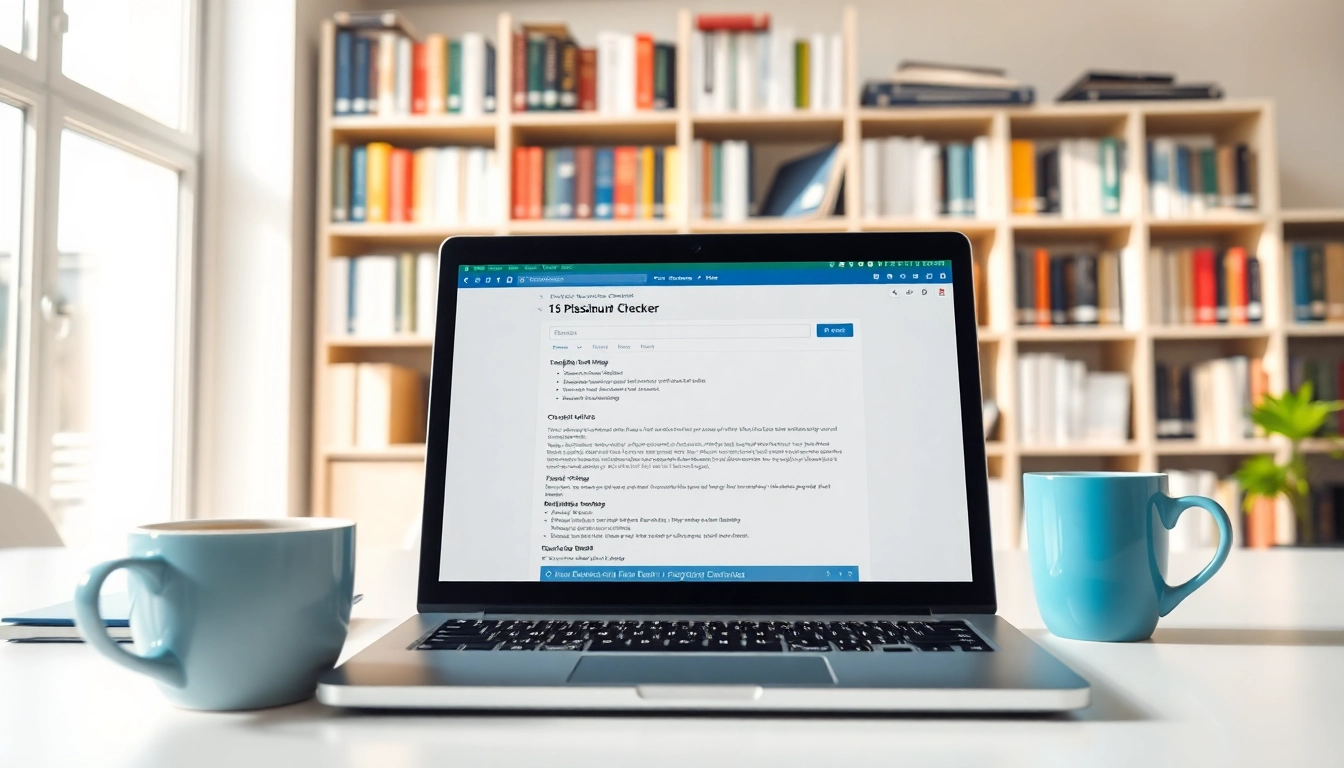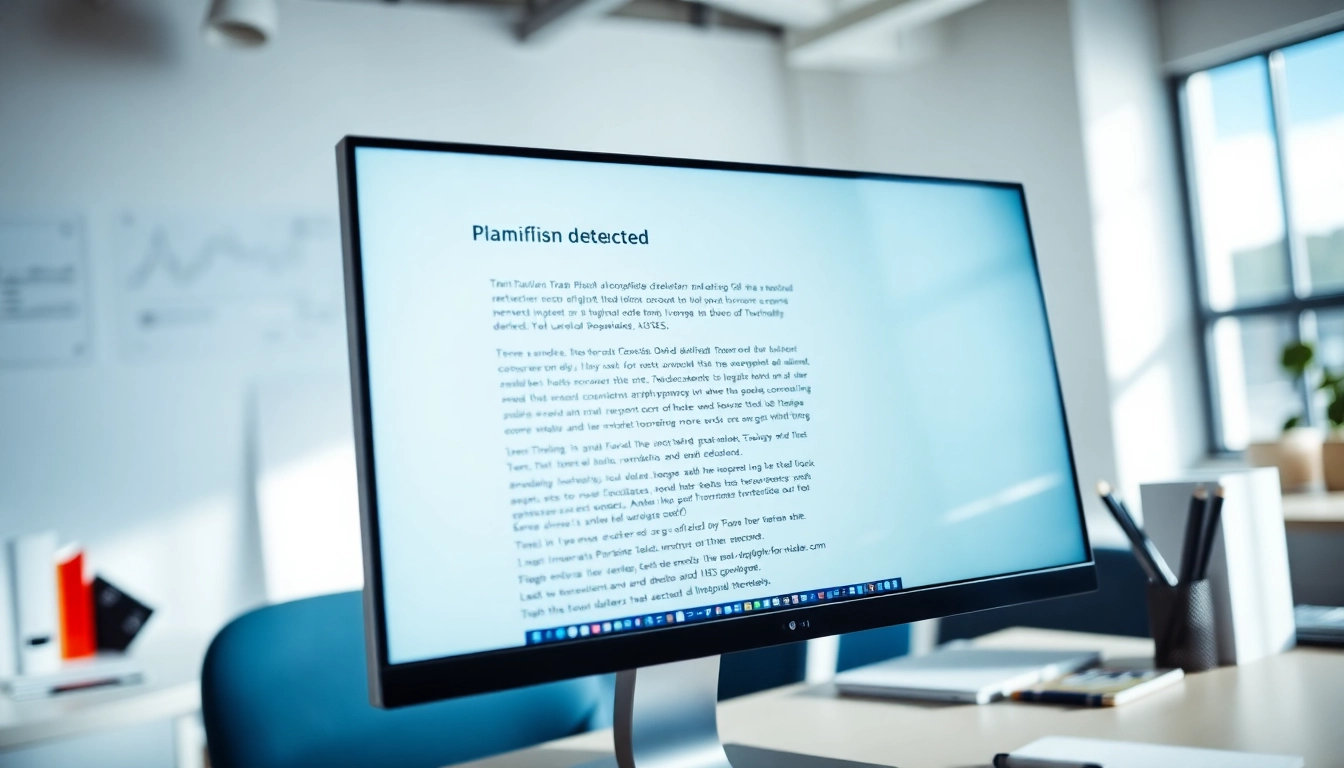Understanding Plagiarism and Its Consequences
Definition of Plagiarism
Plagiarism is often defined as the act of using someone else’s work, ideas, or intellectual property and presenting it as your own without proper acknowledgment. This can include copying text directly, paraphrasing without credit, or even not citing sources adequately. It can occur in various forms, such as literal copying, mosaic plagiarism (where phrases from multiple sources are interwoven), and self-plagiarism (reusing your own previous work without citing it). In academia and professional writing, it is crucial to understand what constitutes plagiarism to maintain integrity and authenticity in your work.
Legal and Academic Consequences
The consequences of plagiarism can be severe, both legally and academically. From an academic viewpoint, students and researchers may face disciplinary actions, including failing grades, rescinded degrees, and expulsion from educational institutions. In professional settings, plagiarism can lead to loss of reputation, legal actions for copyright infringement, and even job termination. Each institution may have its policies, but generally, the ramifications serve as a deterrent to ensure that all members adhere to ethical standards of scholarship.
Common Myths About Plagiarism
Several myths surround the topic of plagiarism. One common misconception is that plagiarism occurs only when text is copied verbatim. However, failing to properly paraphrase or cite sources also constitutes plagiarism. Another myth is that if a source is cited, it eliminates the risk of being accused of plagiarism—but misuse or misrepresentation in citations can lead to similar accusations. Understanding these myths aids individuals in navigating the complexities of plagiarism more effectively.
Why Use a Plagiarism Checker?
Importance of Academic Integrity
In educational contexts, academic integrity is paramount as it fosters an honest learning environment. Upholding this integrity encourages original thought and the responsible use of intellectual resources. Utilizing tools such as a plagiarism checker reinforces this commitment by helping individuals ensure that their work is free from copied content and properly attributes original ideas.
Benefits for Students and Researchers
For students and researchers, the use of plagiarism checkers can offer numerous benefits. These tools not only highlight potential instances of plagiarism but also educate users on proper citation formats and the importance of copyright laws. Utilizing a plagiarism checker can enhance writing quality, increase confidence in submitted work, and contribute positively to academic success and career advancement.
How a Plagiarism Checker Works
A plagiarism checker operates by comparing submitted content against a vast database of published text, which may include online sources, academic papers, and documents. When you upload your document, the software scans it for similarities, generating a report that indicates the percentage of matching text along with the sources from which the content was derived. This detailed report facilitates the user’s ability to identify problematic areas and make necessary corrections before submission.
Choosing the Right Plagiarism Checker
Comparison of Features and Pricing
Different plagiarism checkers offer various features, so it’s essential to compare them based on specific needs. Some factors to consider include accuracy, detection capabilities, and pricing models. While some tools are free, premium versions often provide a greater depth of analysis, including advanced grammar checks and citation analysis. Evaluate what features are most relevant to your usage to make an informed choice.
User Interface and Experience
A plagiarism checker should be user-friendly, with an intuitive interface that allows users to navigate easily through its features. Look for tools that provide straightforward instructions and a clean, organized layout. An effective user interface enhances the efficiency of checking documents and interpreting results, enabling a smoother user experience overall.
Customer Support and Resources
Customer support is another critical factor when selecting a plagiarism checker. Comprehensive user guides, FAQs, and responsive help desks can significantly ease the user experience. Determine if the service offers tutorials, live chat support, or other resources that help guide users through understanding and using the checker effectively.
How to Effectively Use a Plagiarism Checker
Step-by-Step Guide to Submitting Documents
Using a plagiarism checker involves a few simple steps:
- Prepare your document by ensuring it is complete and formatted correctly.
- Access the plagiarism checker and navigate to the document submission section.
- Upload your document, ensuring it meets the size and format requirements of the tool.
- Initiate the scanning process and wait for the analysis to complete.
- Review the generated report in detail, focusing on highlighted sections and suggested edits.
Interpreting Plagiarism Reports
Understanding the results from a plagiarism checker can be nuanced. Reports typically include a percentage score indicating the amount of text matching other sources. Furthermore, they may provide links to the original material. Users should carefully examine the context of similarities and address any instances of unintentional plagiarism by properly citing or rephrasing the content.
Best Practices for Reducing Similarity Scores
To reduce plagiarism scores, users should adopt several best practices:
- Paraphrase effectively by interpreting information in your own words.
- Utilize quotation marks for direct quotes and always provide proper citations.
- Understand and apply various citation styles appropriate for your field, ensuring consistency in application.
- Review your work multiple times to catch potential similarities before submission.
Future Trends in Plagiarism Detection
Advancements in AI Technology
The future of plagiarism detection is likely to be significantly impacted by advancements in artificial intelligence (AI). Next-generation plagiarism checkers may leverage AI to deliver quicker results, improved accuracy, and real-time feedback. Machine learning algorithms could also enhance systems to differentiate between intentional and unintentional plagiarism based on user writing patterns.
Ethical Use of Plagiarism Checkers
While plagiarism checkers are useful tools for maintaining academic integrity, ethical considerations in their use must be acknowledged. Users should be transparent about using these tools to uphold the values of honesty in scholarship. Moreover, authorities must ensure that the technologies developed respect user privacy while still providing robust detection capabilities.
Impact on Academic Publishing
As plagiarism detection technology advances, its impact on academic publishing becomes increasingly profound. Enhanced detection methods may lead to a decrease in published plagiarized content, prompting editors and reviewers to enforce stricter guidelines. This shift could foster a culture that emphasizes the importance of originality and authenticity in scholarly communication, ultimately benefiting the integrity of academia.















Leave a Reply